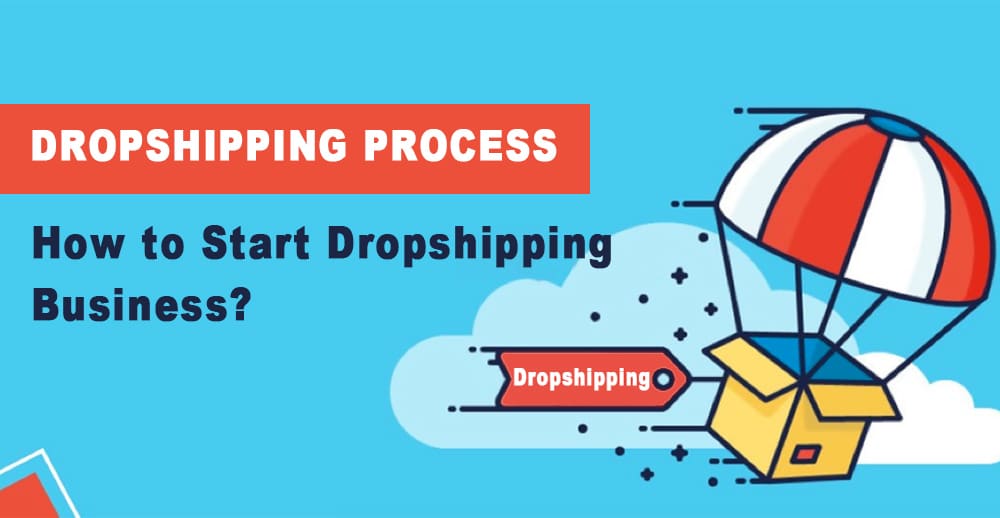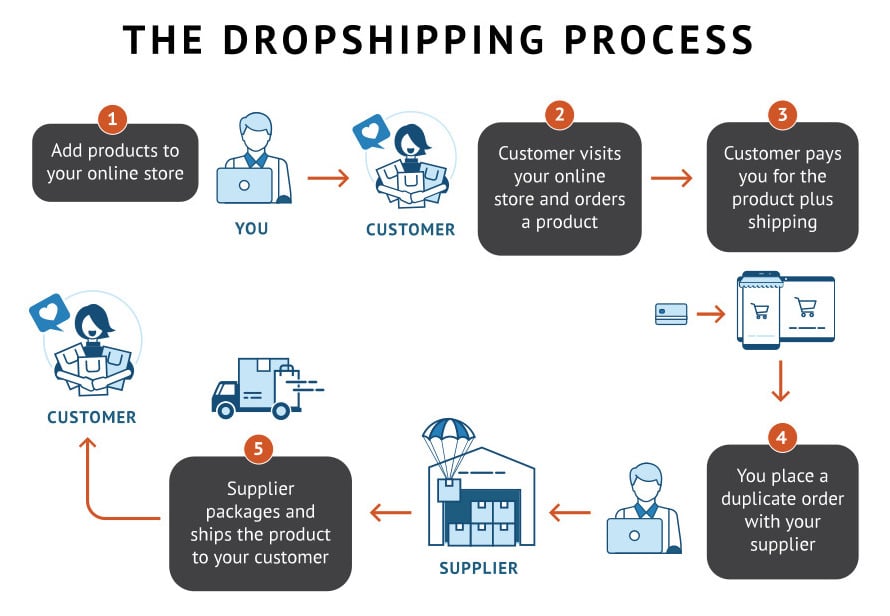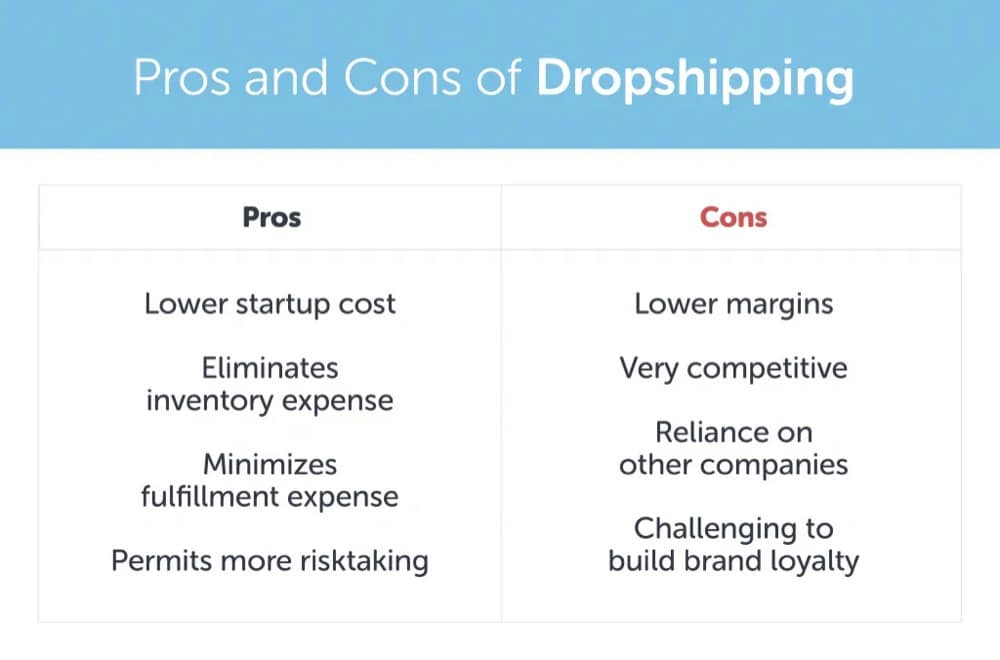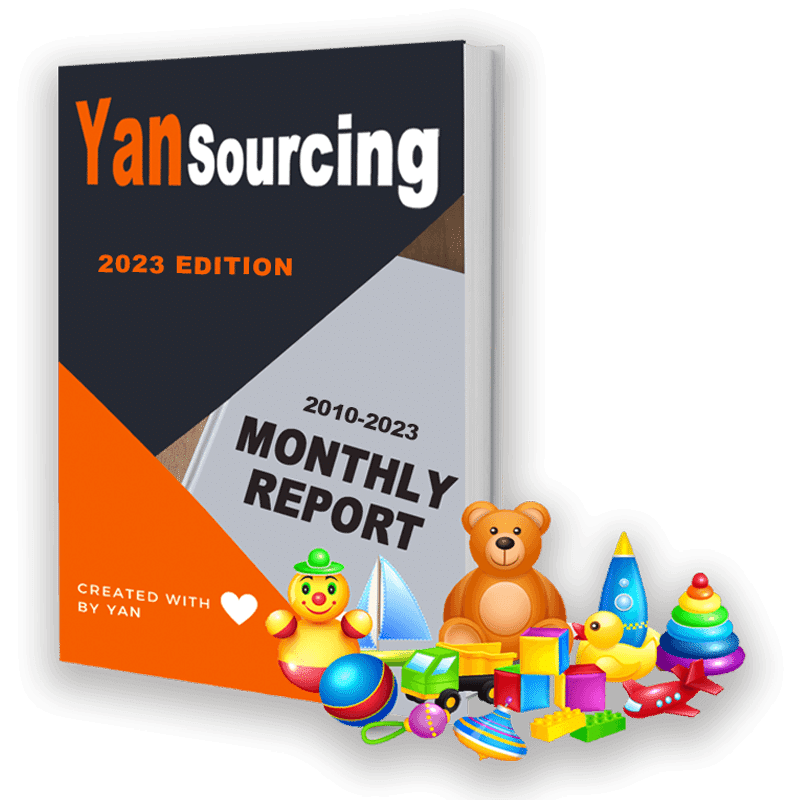
You may hear about dropshipping if you want an online business opportunity. Dropshipping is a retail strategy where brands do not directly manage and distribute their product inventory.
As a result, dropshipping is becoming very popular in the e-commerce space. However, understanding the dropshipping process can be difficult for beginners.
What is dropshipping? How does it work?
In this article, I will answer these questions and teach you how to start a dropshipping business step by step.
What is Dropshipping?
Dropshipping is an order fulfillment method that does not require sellers to keep products in stock. The seller sells the product and forwards the order to a third-party supplier, who then ships the order to the customer.
Dropshipping sellers do not need to invest in any product inventory, warehouses, or storage space and do not handle the fulfillment process.
As a result, it has become a popular and convenient business model for e-commerce retailers who can run profitable stores with a simple setup and minimal risk.
How Does Dropshipping Work?
Dropshipping involves suppliers, retailers, and customers. First, the customer orders a product from retailer’s online store.
Then the retailer forwards the order to his supplier. Finally, the supplier delivers the product to customer on behalf of the retailer. This is how dropshipping works.
Suppose you have a store that sells designer shoes. You purchase shoes from the supplier and sell them at a markup.
Customer orders specific pair of shoes in your store, which means you need to have that item in stock and then pack and deliver it to the customer.
You can keep the entire payment you receive, but you need to pay for the inventory up front and cover all the shipping and packaging costs.
In short, dropshipping profits by selling the product at a higher price. Unlike traditional retail, dropshipping businesses have minimal overhead and lower operating costs.
Most of their work is managing a website, working with platforms and suppliers, and processing orders.
You may learn more on our blog for Dropshipping for details below:
Is Dropshipping Legal? Everything You Must Know In 2022
What is the Dropshipping Process?
There are 3 basic factors in the dropshipping business: customer, retailer, and supplier. The following are the main work-flows of dropshipping:
- A customer places an order and pays on the retailer’s website.
- The retailer purchases the ordered items from his dropshipping supplier.
- The supplier receives the original order information and ships the products directly to customer.
- The customer receives his product.

In short, a customer pays the retailer, and then the retailer pays his supplier. However, even the retailer never handles the goods, the customer’s buying experience is no different than any other e-commerce purchase.
Why Should I Choose Dropshipping?
Dropshipping has become increasingly popular in recent years. At least on the surface, it seems to make it possible for anyone to run an e-commerce business.
The main attraction is that you only need a few start-up costs compared to other fulfillment models.
Your main initial costs will be your website, any fees you pay to your shipping forwarder, and any marketing you need. This eliminates the need for an initial investment in inventory or storage.
A big concern for new businesses is a capital investment because limited budgets don’t allow you to pay for large amounts of inventory. So, dropshipping is a good idea because it minimizes risk, especially for start-ups.
Dropshipping Pros
Dropshipping does offer many advantages to e-commerce business owners:
1. Easy to start and low cost
Starting a dropshipping business isn’t complicated. You don’t need to set up an actual traditional store, pay manage fee, or store products.
Instead, you only need to set up an online store, find suppliers, list their products on your website, set your profit margins, and optimize your store to look attractive.
2. No warehousing required
Your supplier will be responsible for warehousing and shipping your products. Not only save your money on warehousing facilities but also expand your product offerings because you won’t be limited by physical storage space or geographic boundaries.
Due to manufacturing and warehousing being taken care of, you can focus your funds on marketing and customer service.
3. Broad product offerings

Dropshipping opens up more product opportunities so that the retailers can offer a broader range of products.
With a more extensive product catalog, customers have a better selection of products, and you can see more items on each order. Moreover, increasing your product offerings can attract more customers.
4. Easier to test products
Dropshipping is a great fulfillment option to launch a new store and test customer reaction to new product categories, which can be accessories or entirely new product lines.
On the other hand, retailers can advertise and sell products without buying large inventory, which is a significant advantage of dropshipping.
5. Flexibility
A dropshipping business can operate almost anywhere there is an internet connection. You can manage your business as long as you can contact your suppliers and customers.
Customers can communicate directly with you via the Internet, regardless of location.
6. Save time
In dropshipping, retailers do not receive, stack, store, pull, pack, or ship products. All these tasks take much time, meaning that dropshipping saves time and gives you to focus on growing your business in different areas.
Dropshipping Cons
There are also some disadvantages to dropshipping that you should consider before starting a dropshipping business:
1. Lower profit margins
No need to invest in inventory upfront is a huge advantage, but it comes at a much lower profit margin. Suppliers usually charge a fee to put the brand you want on their packaging.
2. Limited control over quality and brand
Even if you don’t need to bear the cost of inventory, you’re still paying for unhappy customers.
The suppliers you work with are responsible for managing and shipping your stock. If they screw up, customers will complain to you or buy from your competitors.
3. Customer service challenges
Handling customer service can be complicated when you have little control over the quality of your products.
If a customer comes to you with a question about missing, incorrect, or damaged order, it may be difficult for you to follow up and resolve the issue with the supplier.
4. Rely on suppliers for inventory
Sudden inventory shortage is one of the most common problems between sellers and suppliers. Suppose many customers suddenly snap up a specific product.
In that case, the supplier may sell out, leaving you in a situation where you have an order but no stock to deliver.
5. Shipping complications
If a customer buys 3 kinds of products from different suppliers, you’re dealing with 3 different shipping costs.
You are forced to either eat some of those costs or sky-high costs and risk losing the customer. None is an ideal option.
How to Start a Dropshipping Business?
Here’s how to start a dropshipping business in 6 steps:
Step 1. Choose a niche market
Niche market is a small part of the broader market that is different by its unique needs, preferences, identity, or interests.
Widely products always have a lot of competition, but with a niche market, small businesses can reduce this level of competition.
The niche you choose needs to be focused and real interest to you. An unfocused product line will be tough to market.
If you are not passionate about your chosen niche, you will be more likely to become discouraged as it takes a lot of work to expand a dropshipping business successfully.
Step 2. Competitor analysis
After identifying your niche and listing potential products you want to sell, the next step is to analyze potential competitors.
This analysis is valuable because it can help you gauge the level of competition, get a handle on who they are, and understand how they operate.
In dropshipping, sellers rarely get exclusive access to the product. This means some other people may be selling your exact product from the same supplier.
Step 3. Identify your target audience
Once you know a target audience for your dropshipping store, you’ll want to learn more about them.
Knowing your target market can help you choose which sales channels to focus on, which new products to sell, how to market your brand, and much more.
When determining your target audience, it helps to ask yourself a few questions:
- Who benefits the most from my product?
- What makes my product different from competitors’ products?
- Who is discovering my products? How do they find out these products?
Step 4. Choose a platform
You can list your products on several platforms, including eBay, Amazon, and Etsy. Remember to list the same items on multiple sites to expand your reach.
Shopify is another popular choice. You can integrate your Shopify account with your own website.
In addition, building your own website and using specific marketing strategies to attract customers to your store will give you the best profit margins because you won’t have to pay the high seller fees with Amazon and eBay.
You may learn more on our blog for Dropshipping Websites for details below:
Complete List 2022: Top 15 Best Dropshipping Websites
Step 5. Find a dropshipping supplier
Finding a good supplier on AliExpress is very easy. You can search for products by the platform and select a supplier from the results list.
You also can see each supplier’s reviews, ratings, and how long the supplier has been on the platform, which should influence your decision on which supplier to choose.
I suggest placing a sample order with them and comparing the results. When making your decision, compare their shipping times, product quality, and packaging, keeping in mind your customers and what they expect from you when placing an order.
You may learn more on our blog for Alibaba Vs. AliExpress for details below:
Alibaba Vs. AliExpress: Which Is Best for Dropshipping in 2022?
Step 6. List your products and sell them
Now that you’ve chosen your product, supplier, and platform, it’s time to list your product online and start selling. But there are still other things to do.
When you list your products on Shopify, Etsy, or any platform, you need to write a unique title, create detailed bullet point descriptions, and choose a competitive selling price for each item.
This is where your competitor analysis comes in handy, as this data can improve your product list.
Dropshipping Process FAQ
1. Is a dropshipping business hard?
It is not hard to start and run a dropshipping business, which is one of the best retail fulfillment methods for beginners.
All you need to set up is an online store and find dropshipping suppliers. The only tricky thing is finding the right products to sell.
2. How much to start a dropshipping business?
Dropshipping is a business model that does not require significant investment because it lacks inventory management.
However, a small investment in marketing and customer support is necessary to increase your business’s flow and profits.
3. Is dropshipping profitable?
Since you don’t need to manage inventory or ship orders, you can reduce costs by not hiring staff or acquiring additional infrastructure.
Due to the low risks and costs involved, you are likely to be able to make a profit faster than other business models.
4. Is dropshipping a legal way to do business?
Yes, it is entirely legal! Dropshipping is a form of order fulfillment. E-commerce businesses can set up their own websites and legally sell products online without holding inventory.
5. Do I need to register a business license for dropshipping?
Yes, you will need to register your business once you start selling, but there is no rush to do so before selling consistently.
This is because most payment providers will require you to prove that your business is qualified.
6. What is a dropshipping supplier?
Generally, a dropshipping supplier is responsible for storing the products you display in the online store, processing all orders, and shipping them to your customers.
7. Is dropshipping allowed on eBay?
Yes, dropshipping is allowed on eBay.
8. Is dropshipping allowed on Amazon?
Yes, dropshipping is allowed on Amazon.
Dropshipping Process Conclusion
By reading this, now you know how to start a dropshipping business and find the best products. As you can see, the dropshipping process is not as difficult as most people make it out to be.
Remember that while dropshipping is a great way to test a new product or supplier, it has limitations as a viable long-term business model.
I am Yan, the founder of Yansourcing, the best dropshipping agent in China, who can quickly and safely help you buy and import from China. If you have any questions about importing from China, don’t hesitate to contact us.


